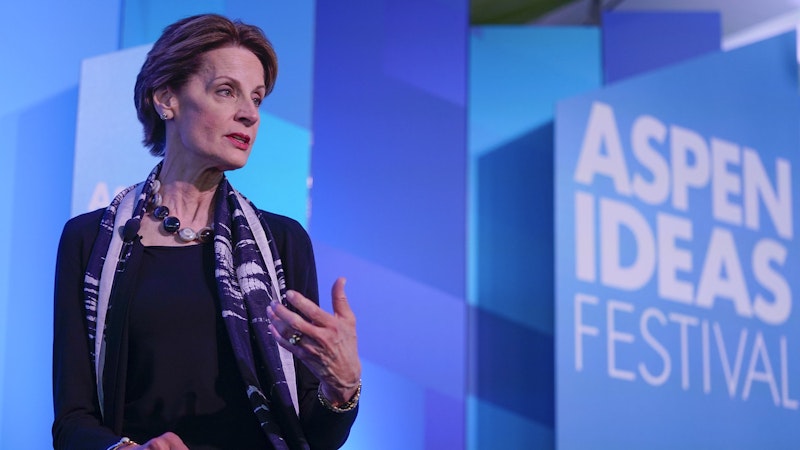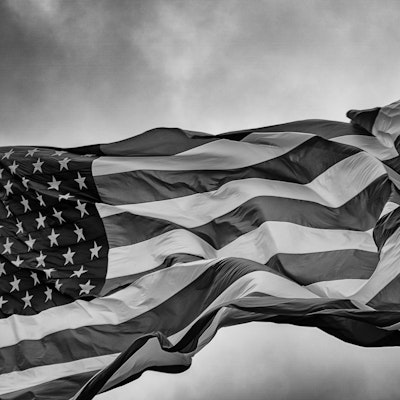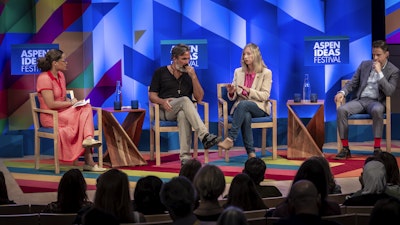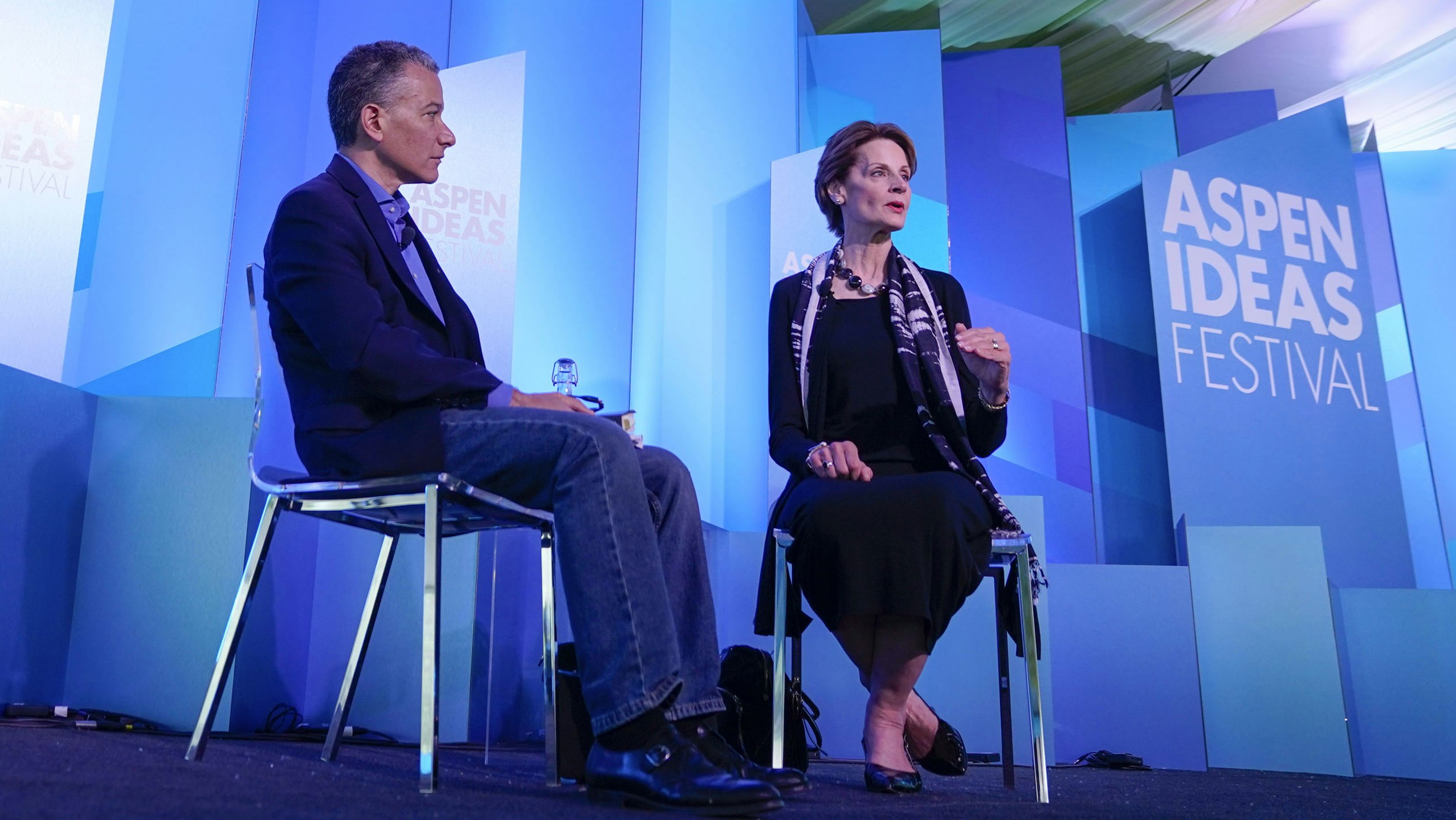

The Chief: The Life and Turbulent Times of Chief Justice John Roberts
Setup
Is the current chief justice of the United States a conservative activist, or a neutral umpire concerned first and foremost with preserving the institution of the Supreme Court? He may be a bit of both. An acclaimed recent biography, by a journalist who has known and observed Roberts for two decades, contends that Roberts is torn between two, often divergent, priorities: to carry out a conservative agenda, and to protect the court’s image and his place in history—a duality that has sowed distrust among his colleagues and anxiety about where he’s taking the court.
- 2019 Festival
- USA
Learning from failure: the SCOTUS edition
Even those who disagree with Supreme Court chief justice John Roberts on the issues usually can’t find fault with his intelligence and skill as legal mind, says Joan Biskupic, legal analyst and author of a biography about Roberts. Roberts quickly rose to prominence through Harvard Law School and the Reagan administration, cementing his reputation. But Biskupic explains how it was one of his few failures that helped him reach the Supreme Court:
Roberts the institutionalist v. Roberts the idealist
There are two competing impulses that drive John Roberts’ judicial decisions, says Joan Biskupic. One side of John Roberts is idealistically conservative — he did, after all, cut his teeth working for the Reagan administration. Another side of Roberts, though, believes vehemently in protecting the legitimacy of the Supreme Court. And in Roberts’ view, contentious decisions about polarizing issues damage the legitimacy of the Supreme Court in the public eye.
Did you know?
Biskupic says that because these impulses are often competing, Roberts has to balance his personal ideology with the realities presented to him on a literal case-by-case basis. And despite his best intentions, he often ends up confounding outside observers with decisions that sometimes fail both his ideology and his concerns for the court.
He’s smart, but is he likable?
Likeability might seem like a superficial trait for such an esteemed institution, but the quality of personal relationships between Supreme Court justices can have very real implications for how decisions are reached. Joan Biskupic says that John Roberts’ inexperience and ideological inconsistency have sown confusion and distrust amongst his fellow justices:
The “all in good time” chief justice
It’s clear that chief justice John Roberts trusts himself above all to make momentous decisions, but how does he actually reach those decisions? In response to an audience question about how to characterize John Roberts’ decision making style, Joan Biskupic breaks down how her analysis:
Learn More
Additional Information
Resources
The Chief: The Life and Turbulent Times of Chief Justice John Roberts by Joan Biskupic
Explore More
USA


Many more Americans are struggling to survive and make ends meet than is typically portrayed in the media and public policy debates. And when poverty is depicted, harmful and...


America’s “second founding” came on the heels of the Civil War, when the architects of the 13th, 14th and 15th amendments thought long and hard about how to enshrine civil rig...


It’s been decades since the United States has updated its immigration policies in any sort of comprehensive way, and the problems and suffering at the southern border have per...


Whether they publicly tout it or not, U.S. technology companies play a powerful role in politics, cultural issues and the way we live. Founder and investor Peter Thiel is one...

The 2024 presidential election is only months away, and the past few weeks alone have brought shocking headlines that change the political ground we stand on — an attempted a...


Sizable electorates around the world are flocking to populist candidates who promise power, domination and a return to better times. The global experiment in liberalism seems...


The federal right to abortions in the United States has been overturned, access to contraception and IVF services are threatened in many states, and the gender wage gap persis...


The Supreme Court has issued another series of controversial and consequential decisions this term, fueling discussion on the current state of the judicial branch. Recent poll...

The rollback of reproductive rights, the push to end no-fault divorce, and gun laws that allow domestic abusers to own a firearm are turning the clock back on women’s rights....

Americans feel more polarized than ever, but two governors from opposite sides of the aisle have made it their mission to show otherwise.

Former Senators Bill Nelson and Kay Bailey Hutchison discuss the bipartisan work that defined their careers, suggest ways for today’s elected officials to find common ground,...

As the Supreme Court concludes another contentious term, it is once again reshaping the legal landscape. With cases on abortion, gun rights and social media — and potentially...

Two billion people worldwide are set to vote in elections this year, amid global conflict, societal mistrust, broken information ecosystems — and the truth-destroying disrupti...

Amid seismic shifts in the entertainment world, Oscar-, Golden Globe- and Emmy-winning Brian Grazer has managed to keep pivoting to new ways to tell stories in movies, TV and...

Images communicate truths, and also lies. Learning to pay attention to photographs can help us discern. An art and cultural historian and a visual artist host a master class o...

Firearms are one of the leading causes of death among children in the U.S., a country where there have been more than 150 mass shootings in the first five months of 2024. Sit...

Hurray for the Riff Raff is more than Alynda Segarra’s musical moniker; they spent their youth hopping trains across America, capturing that life in youthful poetry then and a...

Peter Thiel has made no secret of his feelings about economic and cultural issues. Hear him discuss his vision for the future, his bets on AI and digital currencies, his thoug...

Join our panel of expert analysts for a pre-debate conversation about how the 2024 election is shaping up. Stay for the debate watch party and refreshments, then hear the pane...

From climate change and mental health to hate crimes and chronic school absenteeism, no challenge is too big for young people’s community-changing solutions. Hear from teams o...













